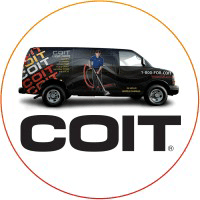Not sure if Stanley Steemer is right for you?
Talk to a Franchise Advisor who can match you with your perfect franchise based on your goals, experience, and investment range.
Talk to an Expert
Stanley Steemer
How much does Stanley Steemer cost?
Initial Investment Range
$158,210 to $522,195
Franchise Fee
$128,495 to $448,495
The franchisee will own and operate a Stanley Steemer cleaning and restoration business that offers cleaning, restoration and related services for various types of systems and surfaces found in indoor environments.
Enjoy our partial free risk analysis below
Unlock the full risk analysis to access 9 more categories covering 100+ risks.
Stanley Steemer March 27, 2025 FDD Risk Analysis
Free FDD Library AI Analysis Date: July 16, 2025
DISCLAIMER: Not Legal Advice - For Informational Purposes Only. Consult With Qualified Franchise Professionals.
Franchisor Stability Risks
Start HereDisclosure of Franchisor's Financial Instability
Medium Risk
Explanation
Audited financials in Exhibit A show Stanley Steemer International, Inc. (Stanley Steemer) is a large, established company with growing revenue. However, operating income has declined over the past three years. This trend, if it continues, could potentially impact the franchisor's ability to invest in the brand, innovate, and provide high-quality support to you in the future. This warrants careful consideration of the system's long-term financial trajectory, although the company appears financially sound overall.
Potential Mitigations
- Your accountant should carefully analyze the multi-year trends in profitability and cash flow from the financial statements.
- It would be wise to ask the franchisor about the reasons for the declining operating income.
- A business advisor can help you assess how these financial trends might impact long-term brand support and franchisee success.
High Franchisee Turnover
Low Risk
Explanation
The FDD's Item 20 tables show a stable system with a relatively low number of terminations, non-renewals, or franchisor re-acquisitions over the past three years. The total number of franchised outlets has seen a slight net decrease, which appears partially driven by consolidations rather than widespread failures. While not indicating high turnover, the stagnant to slightly declining unit count suggests the system is mature and may not be in a high-growth phase.
Potential Mitigations
- Your accountant should help you analyze the net change in outlets over the last three years to understand the system's growth trajectory.
- Discussing the reasons for any outlet closures or transfers with current and former franchisees can provide valuable context beyond the numbers.
- A conversation with a business advisor can help place these modest turnover figures into a broader industry context.
Rapid System Growth
Low Risk
Explanation
The risk of growth outpacing support capability was not identified. Item 20 data does not indicate excessively rapid growth; in fact, it shows a mature system with a slight net decrease in outlets over three years. Item 21 financials reflect a large, well-capitalized company. In general, explosive growth can strain a franchisor's ability to provide adequate support, so slow and steady growth is often a positive indicator for new franchisees.
Potential Mitigations
- Asking current franchisees about their experiences with the quality and timeliness of franchisor support is a valuable due diligence step.
- A review of the franchisor’s financial statements with your accountant can help assess if they have the resources to support their existing franchisees.
- Your attorney should confirm that the franchisor's support obligations are clearly defined in the Franchise Agreement.
New/Unproven Franchise System
Low Risk
Explanation
This risk was not identified. The disclosures in Items 1 and 2 indicate that Stanley Steemer is a very mature franchise system, having operated since 1947 and franchised since 1972. Its management team demonstrates extensive, long-term experience with the company. An unproven system would typically present higher risks related to the viability of the business model and the adequacy of support, which does not appear to be the case here.
Potential Mitigations
- It is still prudent to conduct due diligence by speaking with current franchisees about the system's modern-day relevance and support.
- Your business advisor can help you analyze the long-term sustainability of any business model, regardless of its history.
- Verifying the management team's reputation within the industry can provide additional confidence; your attorney may have resources for this.
Possible Fad Business
Low Risk
Explanation
This risk was not identified. Stanley Steemer operates in the established home services industry (cleaning and restoration), which is a needs-based market rather than a discretionary trend. The company's long history, operating since 1947, provides strong evidence against the business being a short-term fad. A fad business would present a significant risk of declining consumer demand after an initial surge, threatening long-term viability even if your franchise agreement remains in effect.
Potential Mitigations
- A business advisor can help you research the long-term outlook for the home services and restoration industry in your local market.
- Discussing the stability and evolution of customer demand over the years with long-tenured franchisees is a practical research step.
- Your accountant can assist in building financial models that account for potential shifts in the local economy.
Inexperienced Management
Low Risk
Explanation
This risk was not identified. Item 2 shows that the key executives at Stanley Steemer have extensive and long-tenured careers with the company, some spanning several decades. This indicates a very experienced and stable management team. Inexperienced leadership can pose a significant risk, as it may lead to poor strategic decisions, weak support systems, and a lack of understanding of the franchisee-franchisor relationship, which does not appear to be a concern here.
Potential Mitigations
- Speaking with current franchisees can offer direct insight into their perception of the management team's competence and support.
- It can be beneficial to research the public reputation of the company and its leadership team with the help of a business advisor.
- Your attorney can review the franchisor's obligations in the Franchise Agreement to ensure they align with the capabilities of an experienced team.
Private Equity Ownership
Low Risk
Explanation
This risk was not identified. Item 1 and the accompanying documents do not indicate that Stanley Steemer is owned by a private equity firm. The long tenure of the management team suggests stable, long-term ownership. When a franchisor is PE-owned, there can be a risk that decisions are focused on short-term investor returns rather than the long-term health of the franchisees and the brand, a concern that does not appear applicable here.
Potential Mitigations
- It is always a good practice for your attorney to verify the ownership structure of the franchisor entity.
- Engaging a business advisor to research the franchisor's history and ownership can provide additional peace of mind.
- Discussing any ownership changes over the years with long-term franchisees can provide valuable historical context.
Non-Disclosure of Parent Company
Low Risk
Explanation
This risk was not identified. Item 1 identifies Stanley Steemer National Advertising Fund, Inc. as an affiliate, and the audited financial statements in Item 21 are consolidated to include this entity. The financial notes also describe Variable Interest Entities (VIEs) and explain the relationship and consolidation rationale. The disclosure regarding parent and affiliate entities appears to be comprehensive. Inadequate disclosure could obscure the true financial health or control structure of the franchise system.
Potential Mitigations
- Your accountant should review the consolidated financial statements and all footnotes, particularly those concerning related parties and VIEs.
- It is important to have your attorney confirm that all relevant entities and their roles are clearly disclosed and understood.
- If any relationships are unclear, asking the franchisor for an organizational chart can be a helpful step for your business advisor.
Predecessor History Issues
Low Risk
Explanation
This risk was not identified. Item 1 indicates Stanley Steemer has operated as a continuous entity since its origins in 1947 and incorporation in 1972, without mentioning any predecessors from which it acquired the system. This long and consistent operating history suggests stability. In cases where a system has predecessors, it is important to scrutinize their history for issues like litigation or high franchisee failure rates, which does not appear to be a concern here.
Potential Mitigations
- Your attorney should always verify the corporate history detailed in Item 1.
- Even without predecessors, discussing the company's historical evolution with long-term franchisees can provide useful insights.
- A business advisor can help you research the company's historical reputation in the marketplace.
Pattern of Litigation
Low Risk
Explanation
This risk was not identified. Item 3 of the FDD states, "No litigation is required to be disclosed in this Item." This indicates an absence of the specific types of material litigation that franchise laws require to be reported, such as franchisee-initiated lawsuits alleging fraud or franchisor-initiated suits to enforce the agreement. A pattern of such litigation would be a significant red flag concerning the health of the franchisor-franchisee relationship or the viability of the system.
Potential Mitigations
- It is a good practice for your attorney to conduct an independent search for litigation involving the franchisor, as not all disputes may meet the criteria for disclosure in Item 3.
- Engaging in discussions with current and former franchisees is a crucial step to uncover any history of disputes that may not be formally disclosed.
- You should ask the franchisor directly about their dispute resolution philosophy with the help of a business advisor.
Disclosure & Representation Risks
Example Risk: Franchisee Financial Obligations
Blue Risk
Explanation
This risk involves the financial obligations that a franchisee must meet, including initial fees, ongoing royalties, and other required payments. Understanding these obligations is crucial for long-term success.
Potential Mitigations
- Carefully review the Franchise Disclosure Document (FDD) and consult with a franchise attorney to fully understand all financial commitments before signing.
- Conduct regular risk assessments
- Implement monitoring and reporting systems
Unlock Full Risk Analysis
Purchase the complete risk review to see all 102 risks across all 10 categories.
Financial & Fee Risks
Example Risk: Franchisee Financial Obligations
Blue Risk
Explanation
This risk involves the financial obligations that a franchisee must meet, including initial fees, ongoing royalties, and other required payments. Understanding these obligations is crucial for long-term success.
Potential Mitigations
- Carefully review the Franchise Disclosure Document (FDD) and consult with a franchise attorney to fully understand all financial commitments before signing.
- Conduct regular risk assessments
- Implement monitoring and reporting systems
Unlock Full Risk Analysis
Purchase the complete risk review to see all 102 risks across all 10 categories.
Legal & Contract Risks
Example Risk: Franchisee Financial Obligations
Blue Risk
Explanation
This risk involves the financial obligations that a franchisee must meet, including initial fees, ongoing royalties, and other required payments. Understanding these obligations is crucial for long-term success.
Potential Mitigations
- Carefully review the Franchise Disclosure Document (FDD) and consult with a franchise attorney to fully understand all financial commitments before signing.
- Conduct regular risk assessments
- Implement monitoring and reporting systems
Unlock Full Risk Analysis
Purchase the complete risk review to see all 102 risks across all 10 categories.
Territory & Competition Risks
Example Risk: Franchisee Financial Obligations
Blue Risk
Explanation
This risk involves the financial obligations that a franchisee must meet, including initial fees, ongoing royalties, and other required payments. Understanding these obligations is crucial for long-term success.
Potential Mitigations
- Carefully review the Franchise Disclosure Document (FDD) and consult with a franchise attorney to fully understand all financial commitments before signing.
- Conduct regular risk assessments
- Implement monitoring and reporting systems
Unlock Full Risk Analysis
Purchase the complete risk review to see all 102 risks across all 10 categories.
Regulatory & Compliance Risks
Example Risk: Franchisee Financial Obligations
Blue Risk
Explanation
This risk involves the financial obligations that a franchisee must meet, including initial fees, ongoing royalties, and other required payments. Understanding these obligations is crucial for long-term success.
Potential Mitigations
- Carefully review the Franchise Disclosure Document (FDD) and consult with a franchise attorney to fully understand all financial commitments before signing.
- Conduct regular risk assessments
- Implement monitoring and reporting systems
Unlock Full Risk Analysis
Purchase the complete risk review to see all 102 risks across all 10 categories.
Franchisor Support Risks
Example Risk: Franchisee Financial Obligations
Blue Risk
Explanation
This risk involves the financial obligations that a franchisee must meet, including initial fees, ongoing royalties, and other required payments. Understanding these obligations is crucial for long-term success.
Potential Mitigations
- Carefully review the Franchise Disclosure Document (FDD) and consult with a franchise attorney to fully understand all financial commitments before signing.
- Conduct regular risk assessments
- Implement monitoring and reporting systems
Unlock Full Risk Analysis
Purchase the complete risk review to see all 102 risks across all 10 categories.
Operational Control Risks
Example Risk: Franchisee Financial Obligations
Blue Risk
Explanation
This risk involves the financial obligations that a franchisee must meet, including initial fees, ongoing royalties, and other required payments. Understanding these obligations is crucial for long-term success.
Potential Mitigations
- Carefully review the Franchise Disclosure Document (FDD) and consult with a franchise attorney to fully understand all financial commitments before signing.
- Conduct regular risk assessments
- Implement monitoring and reporting systems
Unlock Full Risk Analysis
Purchase the complete risk review to see all 102 risks across all 10 categories.
Term & Exit Risks
Example Risk: Franchisee Financial Obligations
Blue Risk
Explanation
This risk involves the financial obligations that a franchisee must meet, including initial fees, ongoing royalties, and other required payments. Understanding these obligations is crucial for long-term success.
Potential Mitigations
- Carefully review the Franchise Disclosure Document (FDD) and consult with a franchise attorney to fully understand all financial commitments before signing.
- Conduct regular risk assessments
- Implement monitoring and reporting systems
Unlock Full Risk Analysis
Purchase the complete risk review to see all 102 risks across all 10 categories.
Miscellaneous Risks
Example Risk: Franchisee Financial Obligations
Blue Risk
Explanation
This risk involves the financial obligations that a franchisee must meet, including initial fees, ongoing royalties, and other required payments. Understanding these obligations is crucial for long-term success.
Potential Mitigations
- Carefully review the Franchise Disclosure Document (FDD) and consult with a franchise attorney to fully understand all financial commitments before signing.
- Conduct regular risk assessments
- Implement monitoring and reporting systems
Unlock Full Risk Analysis
Purchase the complete risk review to see all 102 risks across all 10 categories.











